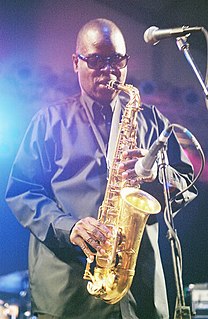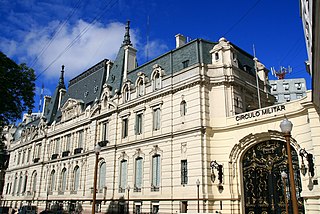| Address | Balcarce 460 |
|---|---|
| Location | Buenos Aires, Argentina |
| Type | Café-concert |
| Genre(s) | World music, [1] jazz [2] |
| Capacity | 700 |
| Construction | |
| Built | 1895 [3] |
| Opened | September 1979 [1] |
| Renovated | 2005 [4] |
| Closed | 1984 (reopened: December 1993) [4] |
| Website | |
| Official website | |
La Trastienda Club is a prominent café-concert style venue in Buenos Aires. [4]

Buenos Aires is the capital and largest city of Argentina. The city is located on the western shore of the estuary of the Río de la Plata, on the South American continent's southeastern coast. "Buenos Aires" can be translated as "fair winds" or "good airs", but the former was the meaning intended by the founders in the 16th century, by the use of the original name "Real de Nuestra Señora Santa María del Buen Ayre". The Greater Buenos Aires conurbation, which also includes several Buenos Aires Province districts, constitutes the fourth-most populous metropolitan area in the Americas, with a population of around 15.6 million.
The club was established in 1993 in a late 19th-century building originally housing a corner grocery in the Montserrat section of Buenos Aires. Seating 400 with standing-room capacity for another 1,000, its proximity to both downtown and the bohemian chic San Telmo section of the city has since helped make it one of the city's best known café-concerts and a leading local venue for artists in the world music, funk, jazz and other genres, featuring performers and bands from both Argentina and abroad. [3]
World music is a musical category encompassing many different styles of music from around the globe, which includes many genres including some forms of Western music represented by folk music, Jazz, as well as selected forms of ethnic music, indigenous music, neotraditional music, and music where more than one cultural tradition, such as ethnic music and Western popular music, intermingle.
Funk is a music genre that originated in African-American communities in the mid-1960s when African-American musicians created a rhythmic, danceable new form of music through a mixture of soul music, jazz, and rhythm and blues (R&B). Funk de-emphasizes melody and chord progressions and focuses on a strong rhythmic groove of a bass line played by an electric bassist and a drum part played by a drummer. Like much of African-inspired music, funk typically consists of a complex groove with rhythm instruments playing interlocking grooves. Funk uses the same richly colored extended chords found in bebop jazz, such as minor chords with added sevenths and elevenths, or dominant seventh chords with altered ninths and thirteenths.
Jazz is a music genre that originated in the African-American communities of New Orleans, United States, in the late 19th and early 20th centuries, and developed from roots in blues and ragtime. Jazz is seen by many as "America's classical music". Since the 1920s Jazz Age, jazz has become recognized as a major form of musical expression. It then emerged in the form of independent traditional and popular musical styles, all linked by the common bonds of African-American and European-American musical parentage with a performance orientation. Jazz is characterized by swing and blue notes, call and response vocals, polyrhythms and improvisation. Jazz has roots in West African cultural and musical expression, and in African-American music traditions including blues and ragtime, as well as European military band music. Intellectuals around the world have hailed jazz as "one of America's original art forms".























